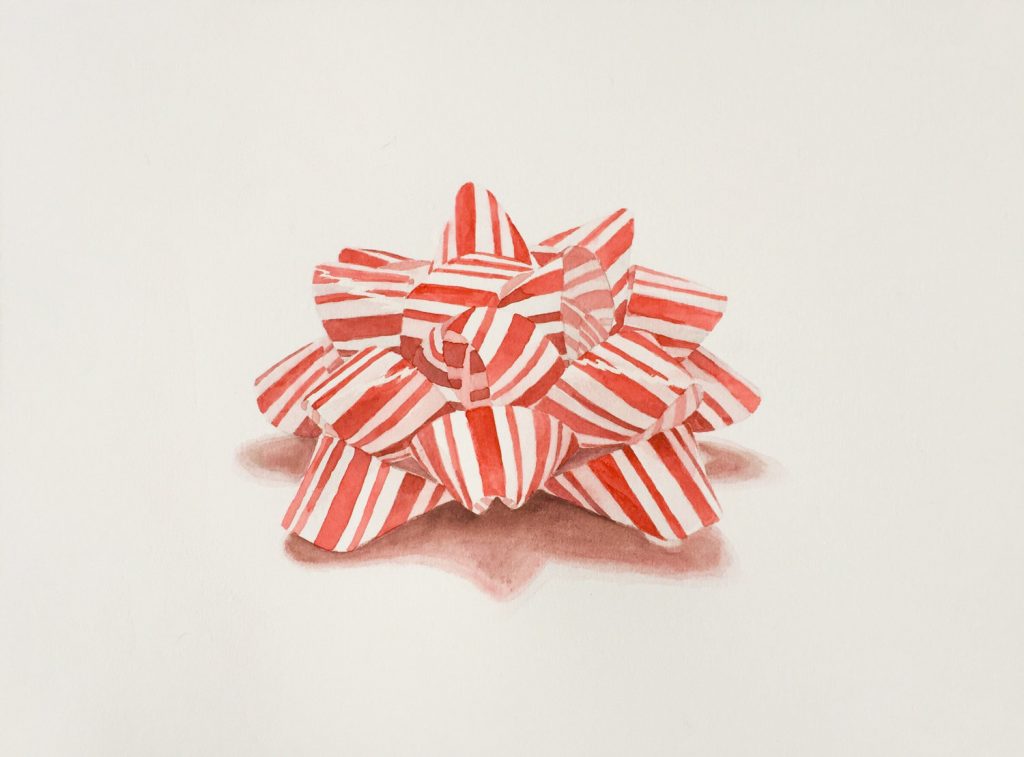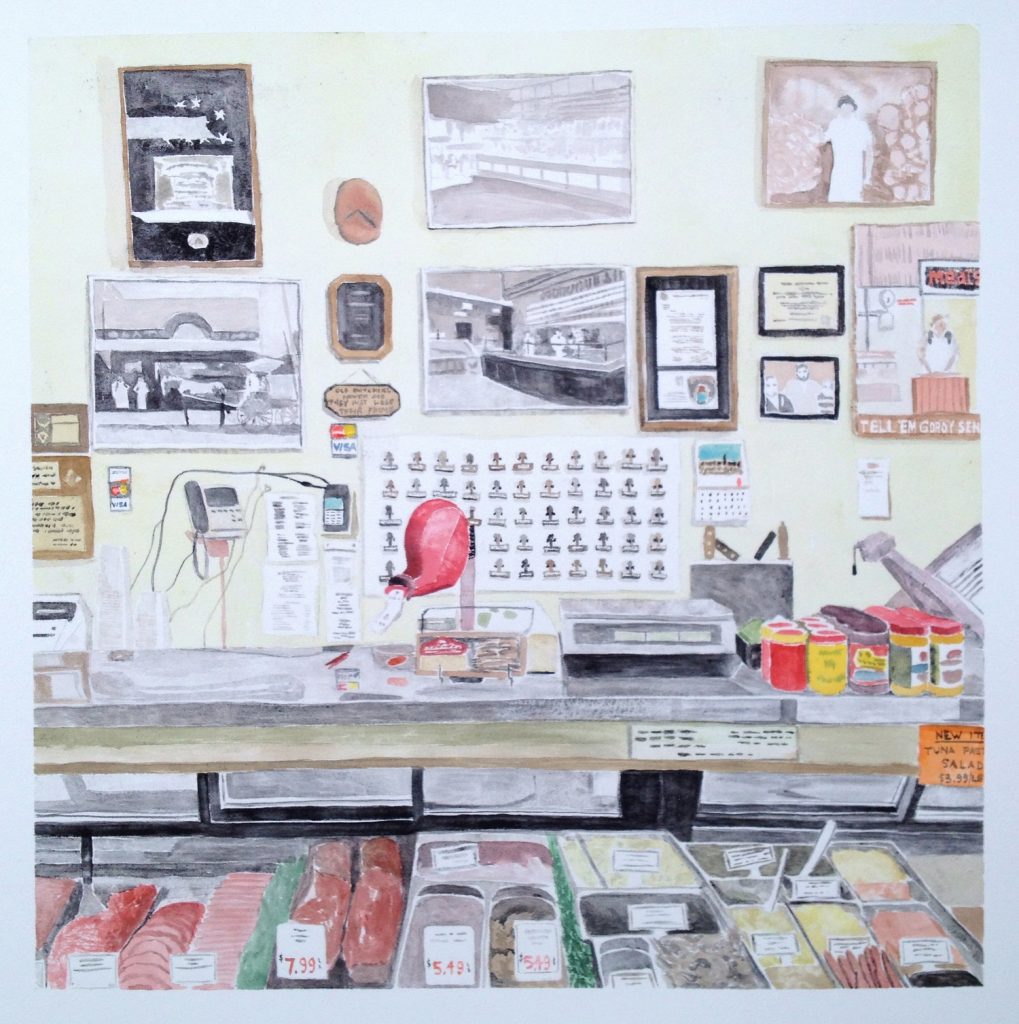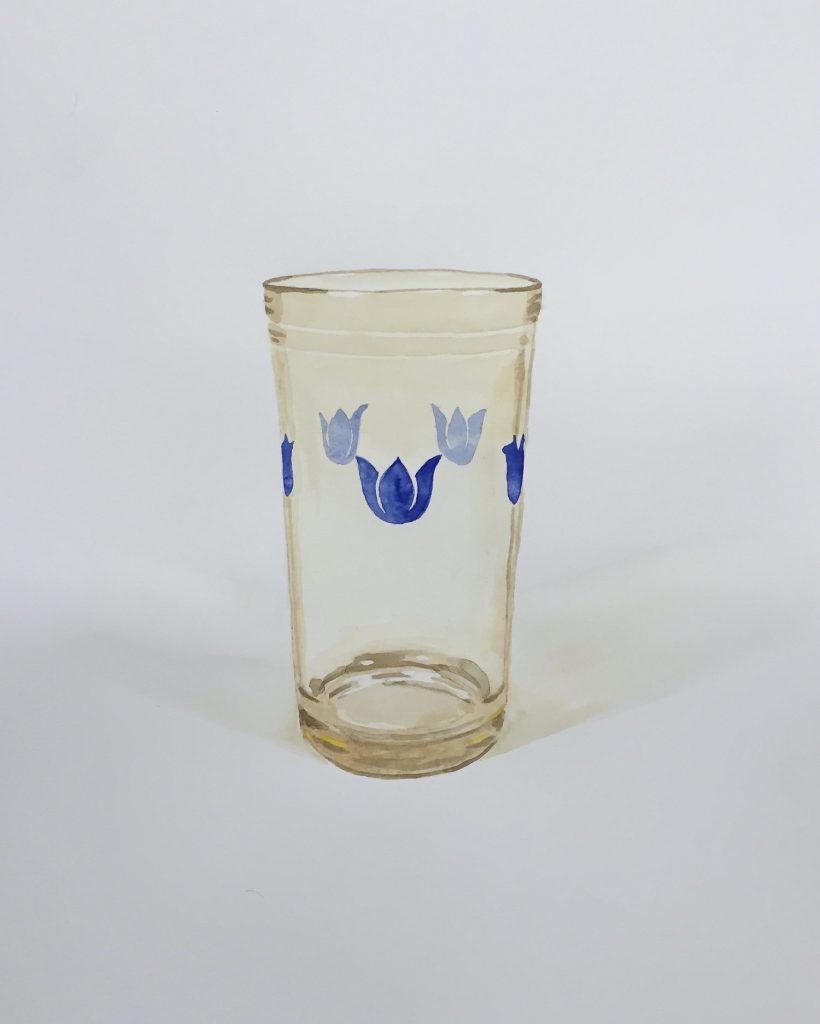
Casual perusers of the gallery may remember Joshua Huyser‘s work since I recently featured a number of his paintings in July. The brilliance of his work isn’t seen in a single piece, but rather when seen as a body of work — in my humble opinion. So I do urge you to look at this collection on his website.
I hope you enjoy this quick interview with Joshua from Minneapolis.
Thanks for taking the time to do an interview. You seem like a busy person! Kids, a new home, a day job, and your art! When do you find time to do watercolor?
Well, to be frank, since the beginning of the pandemic I have not been able to make many paintings at all. Just a handful, really. Hopefully that will be rectified soon.

Your work is amazing. I believe that the body of your work must be viewed in order to appreciate it as much as I do. That is why I featured more than one of your paintings at once on the gallery. What draws you to still life and particularly your series of vessels?
Thanks for your kind words about my work. Much appreciated as well as the multiple piece feature on your gallery. My series of objects began after the birth of my son with Down Syndrome in 2013. There were complications with his birth that required him to be continually supplied with oxygen for a long while. He was hooked up to tubes and monitors for months and this made leaving home nearly impossible for us as new parents. Our life was reduced to the confines of our home several years before the rest of humanity experienced this in unison after COVID-19 hit. Life in a deprivation tank was difficult for me as a very visually oriented individual. Over time, my senses were quite heightened. My vision became very sensitive and by this I mean that I was noticing little things that once passed me by. Anyhow, one day I had a big moment with a black pepper tin on my table sitting in the sun light. It was sitting there casting this beautiful shadow and the whole situation just grabbed my complete attention. I couldn’t turn away. And there was something so wonderful about how the shadow proved this tin’s existence. This was the beginning of an exploration that continues to this day.

Some of the vessels you’ve chosen seem particularly difficult to capture (see the glass measuring cup) – yet you’ve done so amazing well. Were there any that were more difficult than others?
Quite honestly, each and every painting is its own unique puzzle that requires an incredibly unique and singular path to be physically realized. And most certainly, yes, some paths to realization are much more complicated than others. Folks may not realize just how much forethought is put into each piece. Before each painting physically begins, I have painted it completely in my mind beforehand. With watercolor it is absolutely crucial to know your pathway ahead of time, or at the very least the majority of the pathway. Not to say there is no room for improvisation or play, but for the work I am currently making it is important to at least know the right time during the process for each step and method. The order of events matters.

What is your process like? Do you take a photo of the object in a light box and work from that or do you do everything from real life?
My process, as I alluded to in my previous answer, varies with each piece. Sometimes there is a great deal of drawing completed ahead of time and sometimes I just jump right into a piece with pigment without any previous drawing whatsoever. Sometimes I work from photos and sometimes I work directly from life. It really comes down to the parameters of the subject matter.

Tell us a little about the White Out series. How did it start and what interests you about that series?
The White Out Series began in October of 2016. A freak heavy blizzard hit an area near my hometown in Montana that month and I just happened to catch a news clip about the storm on YouTube. At the time I had been very much struggling with feeling isolated in my role as a father to a son with special needs and a husband to a wife with a ridiculously busy career, and when I saw these images of the blizzard I immediately felt as though I was staring at myself. So, the Whiteout Series is little more than a series of self-portraits.
Your love for your son comes through your photos. Tell me how he has impacted your life and your art.
He is the light of my life. Clearly, I have already described some of how he has affected my work in the studio and my personal life, but I would also like to point out that he has very much illuminated my life. He has taught me so much. It is hard for me to quantify. He has brightened my life in incalculable ways. While he has made our life more complicated in many ways he has simultaneously made it so much better. He glows.
Lastly, perhaps you could share a few artists; dead or alive, that has inspired you lately?
Oh, there are so many! Albert Pinkham Ryder has been on my mind a lot. My professor, Joseph Patrick, in graduate school at the University of Iowa was and continues to be an inspiration as well. Another professor of mine, John Dilg, is in there as well. The photography of Evelyn Hofer is very inspiring. Also Francesca Woodman’s general tone. Vivian Maier’s street photography. Walker Evans. Robert Frank comes up in my head a lot. Dave Muller, Albert York, Giorgio Morandi, Philip Guston, Berte Morisot, Francisco De Goya y Lucientes, Tim Gardner, Mamma Anderson, Dike Blair, Vija Celmins, Vilhelm Hammershoi, Alice Mumford, Katelyn Eichwald, Todd Norsten, Ellen Siebers, Charlie Roberts, Peter Brook, Antonio Lopez Garcia, David Risley, James Rielly, Jockum Nordstrom, Leon Spilliaert, Lois Dodd, Lucy May Stanton, Jesse Albrecht, Dan Attoe, Andy Rosen, Rebecca Roberts, Hamlett Dobbins III, Richard Diebenkorn… I could go on and on. I guarantee you that I will think of others later that I will be embarrassed to have not mentioned.
—
My thanks to Joshua for taking the time to answer a few questions for the gallery and for providing so many great artists to look into. He mentioned more than a few of my favorites and a few names I had never come across.
Be sure to visit Joshua’s website and follow him on Instagram.
